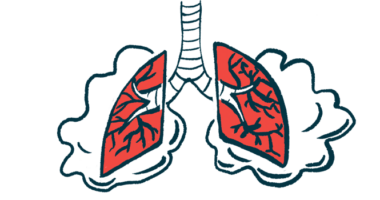Lung abnormalities don’t strongly influence managing CF in infants
Clinical findings, including respiratory symptoms, affected decisions more

Although infants with cystic fibrosis (CF) may have lung function abnormalities between the ages of 3 months and 2 years, these are predominantly mild and temporary, a real-world study reports.
Tests that indicate abnormal lung function may influence decisions about clinical management of CF. Clinical findings, however, including evidence of certain respiratory symptoms or microorganisms in the lungs, impacted these decisions more. The study, “Infant Lung Function in Cystic Fibrosis: A Real-World Study,” was published in Pediatric Pulmonology.
CF is a genetic condition where mucus becomes abnormally thick and sticky. Typically serving as a protective barrier, mucus lines the airways, but it can cause lung problems early in life in CF. Symptoms may include frequent lung infections, wheezing, and shortness of breath.
Lung function assessments are part of routine follow-ups when monitoring CF patients. However, real-world data on how these results influence care decisions about disease management are lacking, according to researchers. “We hypothesized that children with abnormal infant [lung function] tests would have had more frequent changes in management at around the time of the infant [lung function] datapoint,” they wrote.
Role of symptoms, infection in managing CF
Here, infants and young children with CF at the Great Ormond Street Hospital in London received three routine lung function tests — at about 3 months, and 1 and 2 years of age when clinically stable. Lung function was assessed with lung clearance index (LCI), functional residual capacity (FRC), and forced expiratory volume (FEV). LCI measures how efficiently the lungs clear a tracer gas to reveal airway obstruction and early lung function impairment. FRC tests how much air remains in the lungs after a normal exhale, and FEV assesses the amount of air patients can forcefully exhale.
The study included data from 60 infants who received at least one lung function test at the hospital during their first two years of life. All were born between 2012 and 2018. A total of 126 encounters where a senior physiologist performed tests were analyzed. Of these, 37% revealed at least one abnormality in lung function. This subgroup had more frequent abnormal chest findings at a medical review or tested positive for airways relative to those with normal lung function.
LCI values were the most frequently abnormal, with high clearance time in 31% of the 3-month-olds and 19% at age 2. Eighteen participants received LCI tests at all three time points and none showed consistently worsening values.
While abnormal LCI was most common at the earliest time point, FRC abnormalities became progressively more frequent at later ages. At the two-year time point, 37% of tests yielded abnormal results.
FEV abnormalities were the least common, seen in two cases, both at 3 months. “We hypothesize that improvements in the quality of care for [infants with CF] at our center during this period, particularly the optimization of the clinical pathway for infants with positive neonatal screening (e.g., reducing the time to diagnosis confirmation and first visit at the CF center) may have contributed to these results,” wrote the researchers.
They said “abnormal [lung function] without corresponding clinical concerns rarely led to any change in management.” Clinical findings, including chest symptoms or positive bacterial cultures from airway samples, tended to impact these decisions more. Management changes included antibiotics, other treatments, or further testing.
No clear risk factors associated with abnormal lung function were seen among the participants, although the analysis found a high frequency of acid reflux treatment in children with abnormal LCI at 3 months of age.
The study was limited by its retrospective nature and small sample size, the researchers said, noting the number of participants wasn’t sufficient to statistically determine differences in clinical outcomes based on lung function abnormalities. They recommended that future studies explore these implications. “This clarification will be pivotal in determining whether routine performance of these assessments on clinical grounds is justified.”








